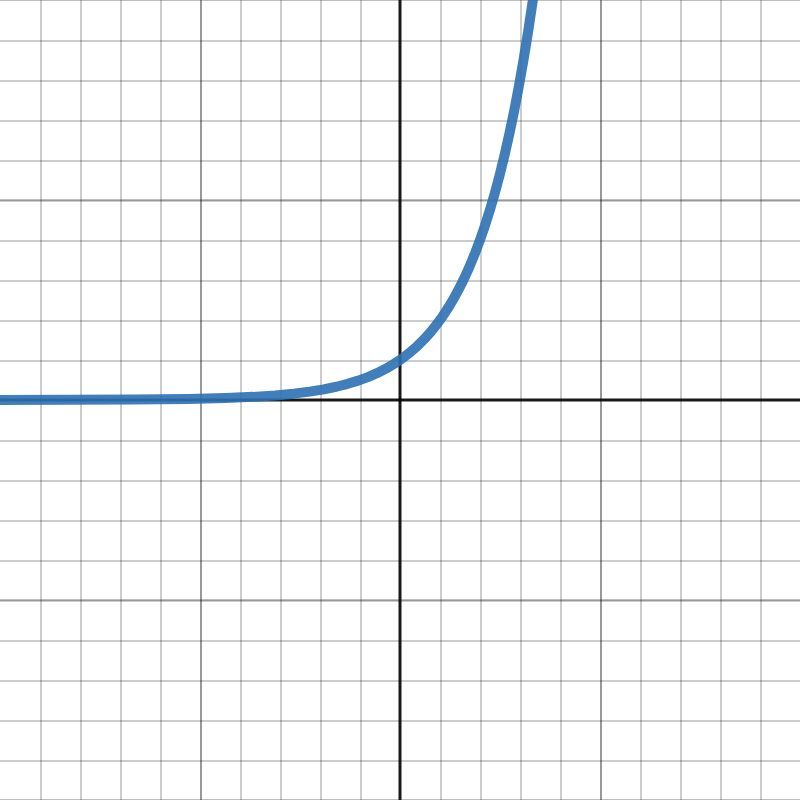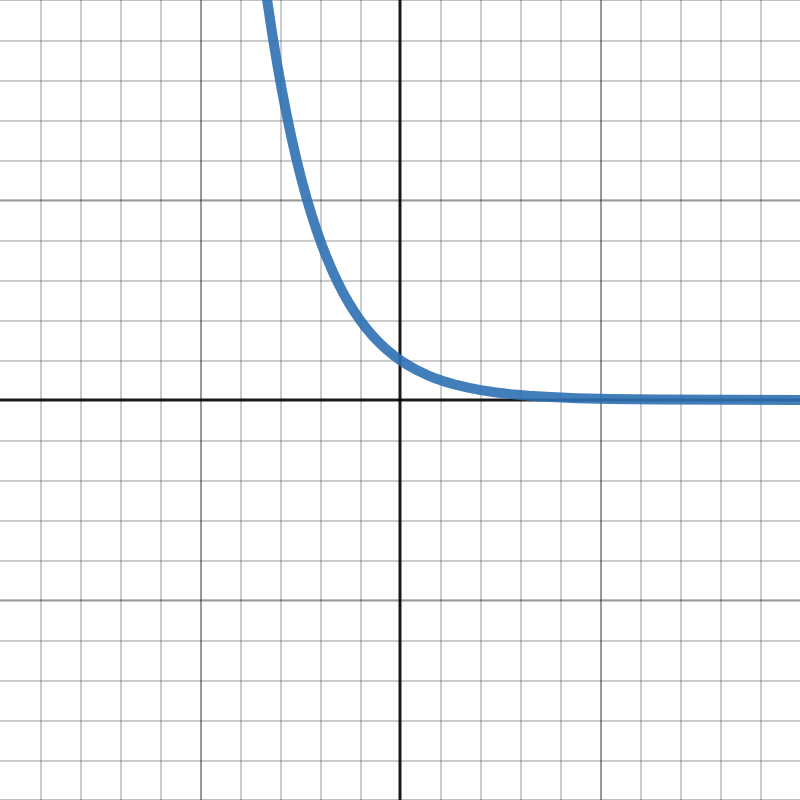Section 14.2 Graphs and End Behavior of Exponential Functions
Fact 14.12. Finding the Graph of an Exponential Function.
For our usual exponential functions \(f(x)=a\cdot b^x\text{,}\) there are two possible shapes of the graph:


Looking at the two graphs, we can see that the end behavior is different from what we've seen before: it has a horizontal asymptote on one side, while the other blows up to \(\infty\text{.}\)
Fact 14.14. Finding End Behavior of an Exponential Function.
To find the end behavior of an exponential function, we first need to figure out whether it represents growth or decay. After that, we can use the shape of the graph to determine the end behavior.

For functions with exponential growth, we have the following end behavior.
The end behavior on the left (as \(x\rightarrow -\infty\)), it has a horizontal asymptote at \(y=0\)*
The end behavior on the right (as \(x\rightarrow \infty\)), \(y\rightarrow \infty\text{.}\)

For functions with exponential decay, we have the following end behavior.
The end behavior on the left (as \(x\rightarrow -\infty\)), \(y\rightarrow \infty\)
The end behavior on the right (as \(x\rightarrow \infty\)), it has a horizontal asymptote at \(y=0\)*.
*Warning: Vertical shifts in the formula could change the value of the horizontal asympote
Example 14.15.
Suppose we want to find the end behavior of \(f(x)=7(1.56)^x\text{.}\) Since \(b=1.56\gt 1\text{,}\) we can see that this is exponential growth. Based on the shape of the exponential growth graph, we have the following end behavior:
As \(x\rightarrow -\infty\text{,}\) \(y\rightarrow 0\text{.}\)
As \(x\rightarrow \infty\text{,}\) \(y\rightarrow \infty\text{.}\)
Checkpoint 14.16.
Find the end behavior of the function \(f(x)=\frac{1}{2}(0.01)^x\text{.}\)
As \(x\rightarrow -\infty\text{,}\) \(y\rightarrow \infty\text{.}\)
As \(x\rightarrow \infty\text{,}\) \(y\rightarrow 0\text{.}\)
Since \(b=0.01\lt 1\text{,}\) we can see that this is exponential decay. Based on the shape of the exponential decay graph, we have the following end behavior:
As \(x\rightarrow -\infty\text{,}\) \(y\rightarrow \infty\text{.}\)
As \(x\rightarrow \infty\text{,}\) \(y\rightarrow 0\text{.}\)
Example 14.17.
Suppose we want to find the end behavior of \(f(x)=7(1.56)^{x+3}-2\text{.}\) Since \(b=1.56\gt 1\text{,}\) we can see that this is exponential growth. So, we know what the shape of the graph looks like, but notice that we have some transformations here. The \(+3\) is a horizontal shift, which won't affect our end behavior, so we can ignore that. However, the \(-2\) shifts the whole graph down. That won't affect the side that goes to \(\infty\) (since \(\infty-2\) is still \(\infty\)), but it will move our horizontal asympote down 2. So, we have the following end behavior:
As \(x\rightarrow -\infty\text{,}\) \(y\rightarrow -2\text{.}\)
As \(x\rightarrow \infty\text{,}\) \(y\rightarrow \infty\text{.}\)
Checkpoint 14.18.
Find the end behavior of the function \(f(x)=\frac{1}{2}(0.01)^{x-4}+9\text{.}\)
As \(x\rightarrow -\infty\text{,}\) \(y\rightarrow \infty\text{.}\)
As \(x\rightarrow \infty\text{,}\) \(y\rightarrow 9\text{.}\)
Since \(b=0.01\lt 1\text{,}\) we can see that this is exponential decay. So, we know what the shape of the graph looks like, but notice that we have some transformations here. The \(-4\) is a horizontal shift, which won't affect our end behavior, so we can ignore that. However, the \(+9\) shifts the whole graph up. That won't affect the side that goes to \(\infty\) (since \(\infty+9\) is still \(\infty\)), but it will move our horizontal asympote up 9. So, we have the following end behavior:
As \(x\rightarrow -\infty\text{,}\) \(y\rightarrow \infty\text{.}\)
As \(x\rightarrow \infty\text{,}\) \(y\rightarrow 9\text{.}\)